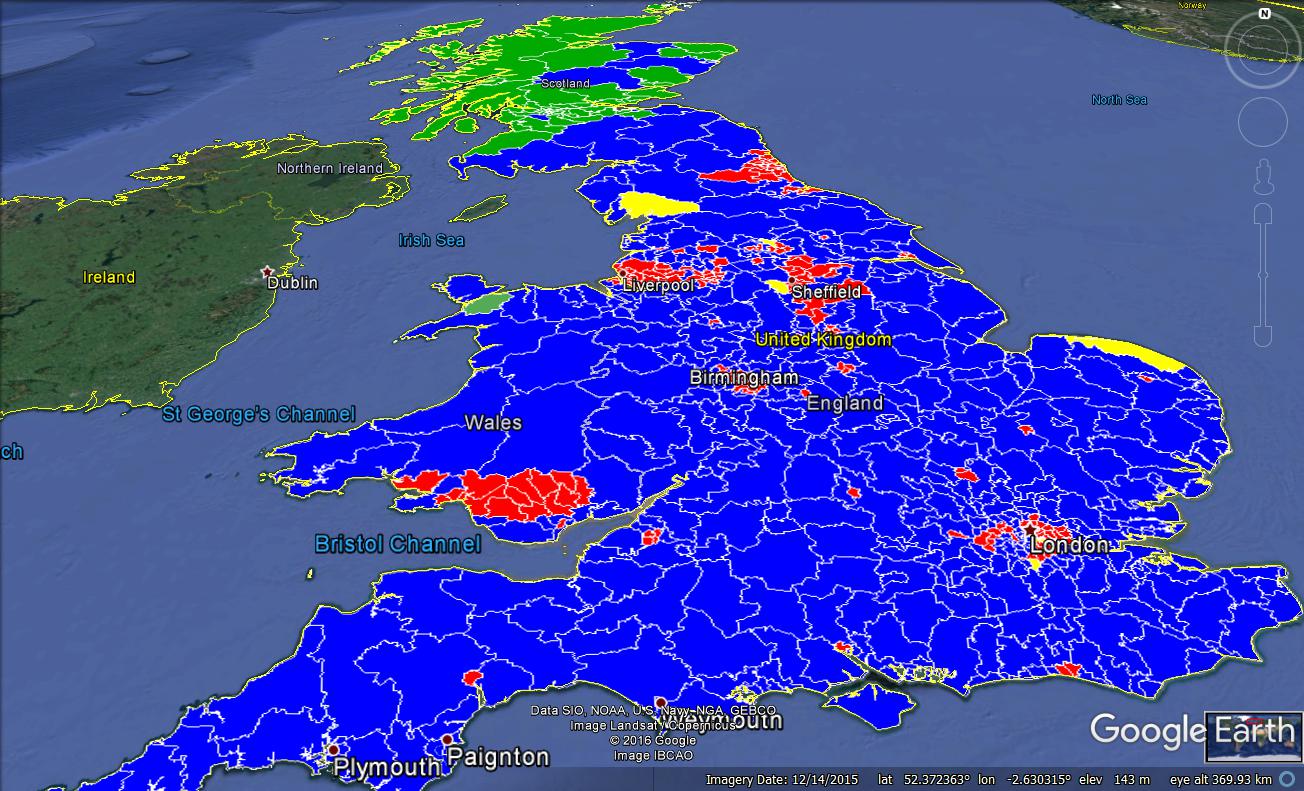The overall average (and seat totals) for the parties in the polls ending between May 3rd and 9th in the UK General Election were as follows :
| CONSERVATIVES | 48% | 409 seats |
| LABOUR | 29% | 167 seats |
| LIBERAL DEMOCRATS | 9% | 6 seats |
| UNITED KINGDOM INDEPENDENCE PARTY | 6% | |
| SCOTTISH NATIONALIST PARTY | 4% | 49 seats |
| PLAID CYMRU | 1% | 1 seat |
| GREENS | 2% |

The Conservatives are up 10 points since 2015 and would gain 79 seats – however in the first polls after the election was called they were on a similar figure but were gaining 125 seats. The difference this time is that Labour have closed the gap somewhat from 23 points to 19 points. They would gain particularly amongst older voters, working-class voters and voters in Wales and Scotland (though their gains in terms of seats in the latter country would be modest). By contrast, the vote amongst younger voters has remained static.
Labour have held onto their younger vote – in fact they increase it, but lose amongst older voters. The Tories are ahead of them in every region bar the North – but a rise in their vote in Wales suggests they could take 15 of the 40 seats, which is an improvement on the near-complete wipeout suggested by previous polls.
The Liberal Democrats fare better amongst middle-class voters, and see a sizeable increase in London – but less elsewhere. 5 out of every 6 Liberal Democrats are Remain voters, due partly to a small influx of Remain voters from other parties, but more because of an exodus of 2015 Liberal Democrat voters who voted LEAVE – it seems only 2 out of every 5 intend to stick with the LibDems, and a similar number intend to vote for the Tories.
As many 2015 UKIP voters now say they are going to vote Conservative as say the will remain with UKIP. They do best amongst working-class voters. The vast majority of UKIPers are Leave voters.
The SNP would still retain a huge majority of the seats in Scotland, but the Tories would secure a significant foothold of 10 seats.
The Conservatives been very successful in retaining their 2015 voters, with 9 out of 10 saying there are sticking with them. In addition nearly half of 2015 UKIP voters and nearly a quarter of 2015 Liberal Democrat voters (and 1 in ten 2015 Labour voters) are now intending to vote for the Conservatives. Of Particular interest is that, despite the fact that the Conservatives are implementing Brexit, they are managing to hang on to more than 5 out of 6 of their 2015 voters who voted REMAIN in 2016 (source : ICM polls). This compares to Labour only currently retaining 2 out of 3 of their LEAVE voters, and the Liberal Democrats only retaining 1 out of 3 of their Leave Voters.
In fact the Liberal Democrat support base seems to be in considerable flux – only half of those currently intending to vote LibDem voted for the party in 2015 (one in 6 are former Tory voters, 1 in 4 are former Labour voters) – on the other side 2 out of every 5 of their 2015 voters are now voting for either the Conservatives or Labour (splitting 3:2 in favour of the former).
One of the more surprising findings in ICM polls is that the Conservatives are outpolling Labour by 46% to 35% in Labour marginal seats. However a similar analysis by YouGov (which returned a 9 point lead for the Tories in Labour marginals on National Voting intentions) found that when respondents were asked about their constituency voting intention, the Conservative lead was cut to 2 points.
You can read the report here :
UK May 3 to May 9